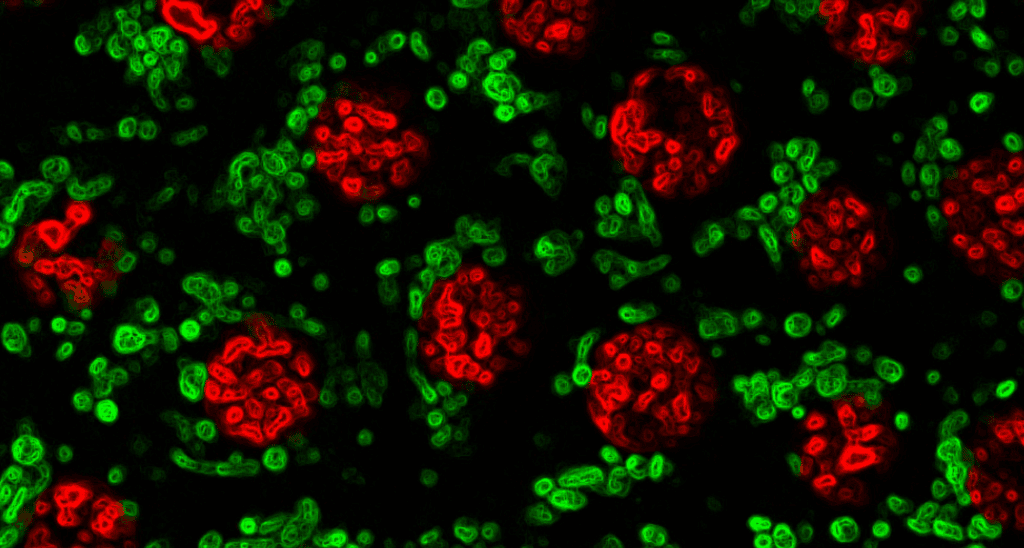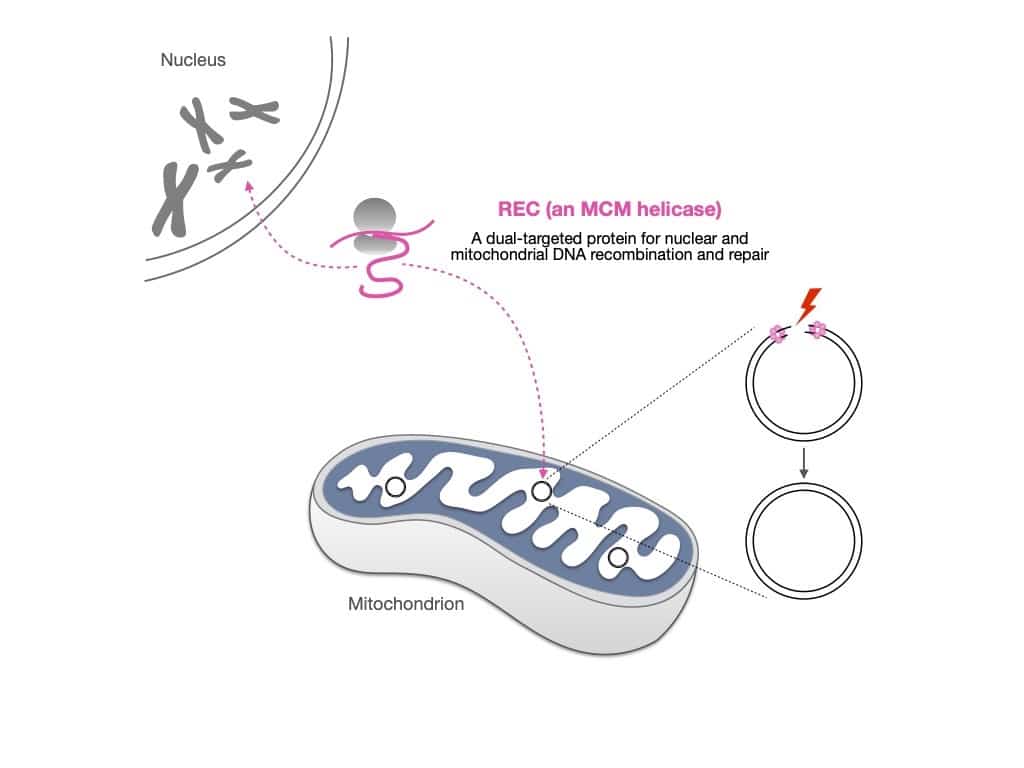DREAM functions are mediated by THAP proteins
October 19, 2021
Read more
Klucnika et al. find that the DNA helicase REC repairs mitochondrial DNA (mtDNA) by homologous recombination and prevents age-associated mtDNA mutations. This study provides the first insight into the molecular machinery of mtDNA recombination and demonstrates its importance in safeguarding the mitochondrial genome during ageing.
Klucnika et al. (2023) REC drives recombination to repair double-strand breaks in animal mtDNA. Journal of Cell Biology vol. 222 no. 1; 2023. DOI: 10.1083/jcb.202201137.

Mechanisms that safeguard mitochondrial DNA (mtDNA) limit the accumulation of mutations linked to mitochondrial and age-related diseases. Yet, pathways that repair double-strand breaks (DSBs) in animal mitochondria are poorly understood. By performing a candidate screen for mtDNA repair proteins, we identify that REC – an MCM helicase that drives meiotic recombination in the nucleus – also localises to mitochondria in Drosophila.
We show that REC repairs mtDNA DSBs by homologous recombination in somatic and germline tissues. Moreover, REC prevents age-associated mtDNA mutations. We further show that MCM8, the human ortholog of REC, also localises to mitochondria and limits the accumulation of mtDNA mutations.
This study provides mechanistic insight into animal mtDNA recombination and demonstrates its importance in safeguarding mtDNA during ageing and evolution.